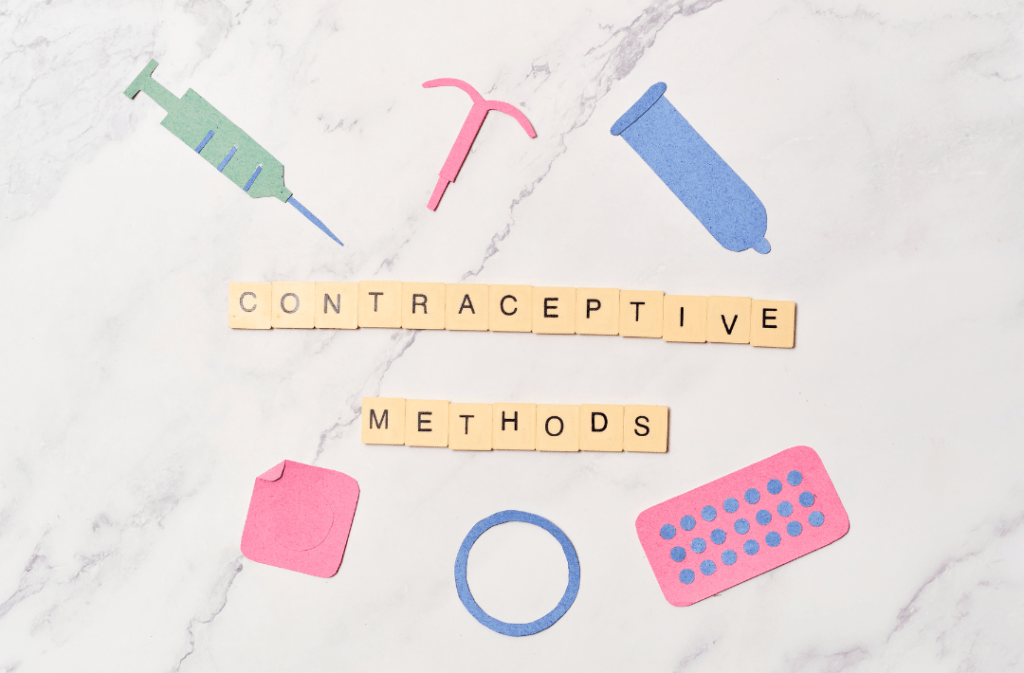The common contraception methods for females mainly include hormonal contraceptive pills and intrauterine devices (copper IUD and hormonal IUD), barrier methods like a female condom, birth control implant, patch, shot, vaginal ring, cervical cap, diaphragm, sponge, Birth control is only going to be effective when used correctly! The type of birth control you use is a personal choice, and you need to take some time to learn about each type of birth control and how to use it. 1
What is the most commonly used contraceptive?
The most commonly used contraceptives are male condoms and combined oral contraceptive pills (COCs). Because of their high efficacy, guidelines also suggest that long-acting reversible contraceptive (LARC) methods — intrauterine devices (IUDs) and implants — to be used as first-line options for most women. These LARC methods have an extra advantage of not worrying about remembering to take, apply, or insert their contraception and not having to rely on a yearly appointment for refills. LARC users have much higher 3-year overall continuation rates than other methods, including combined hormonal contraception.
What are highly effective birth control methods?
The effectiveness of your contraceptive method depends on the type you use and whether you use it correctly. Due to this, some methods are highly effective than others. You need to follow the instructions and use your contraception correctly for it to show maximum effectiveness.
Long-active reversible contraceptive (LARC) methods such as IUDs are the most effective because you do not have to remember to take or use these methods. They have no user failure, so they are not less effective with typical use. There are two types of LARCs – IUDs and implants. IUDs are inserted into your uterus, whereas implants can be inserted into your arm. They can prevent pregnancy for many years and allow you to get pregnant as soon as removed. Your doctor can remove your birth control if you decide to become pregnant in the future. 2
Let’s try to understand more about the various methods of birth control available for women.
Hormonal methods of contraception for female –
- Birth control pill – Birth control pills are a type of hormone-based medication. They are sold in packs of one pill each day. If you take your pill daily on time, it is safe, inexpensive, and effective. In addition to preventing pregnancy, the pill has a wide range of other health benefits. The two types of pills are –
- Combination pills (combined oral contraceptives, or COCs)
- Progestin-only pills (aka POPs or mini pills)
These pills have the hormones estrogen and progestin. They can prevent pregnancy in the following ways – it prevents ovulation, thickens the mucus on the cervix and prevents sperms from meeting with an egg. Hence, forgetting your pills, losing the pack and not refilling your prescription on time — are the main reasons why people might get pregnant when they use the pill. It is good to plan ahead and think about the ideal approach to use the pill correctly. 3
- Birth control implant – The implant is a tiny, thin rod roughly the size of a matchstick. It causes your body to produce hormones that prevent you from becoming pregnant. A nurse or doctor inserts the implant into your upper arm, which releases the hormone progestin to stop you from getting pregnant for up to 3 years. It’s a get-it-and-forget-it method of birth control. If you decide you want to be pregnant or do not want to have your implant, your doctor can remove it. If the implant is removed, you can become pregnant quickly. 4
- Vaginal ring – The birth control ring (also known as the vaginal ring or the ring) is a safe and convenient method of birth control that works well when used correctly. You wear a small, flexible ring within your vagina, and it prevents pregnancy by releasing hormones into your body 24 hours a day, seven days a week. This prevents sperms from fusing with an egg (which is called fertilization). As this ring is inserted inside your vagina, the hormones are absorbed into your body via the vaginal lining. One ring might last up to 5 weeks. Depending on your ring schedule, you pull your old ring out of your vagina and replace it about once a month. 5
- Birth control patch – The transdermal contraceptive patch is a safe and convenient method of birth control that works extremely well when used correctly. Wearing the patch on specific parts of your body causes hormones to be absorbed via your skin, preventing pregnancy. The birth control patch works by preventing ovulation and also preventing sperms from meeting with an egg (which is called fertilization). The patch (like most birth control pills) contains the hormones estrogen and progestin, which are similar to the hormones our bodies produce naturally. 6
- Birth control shot – An injection known as the depo shot (Depo-Provera) is given once every three months. It’s a safe and easy birth control option that works well if you get it on time. The progestin hormone is contained in the birth control shot. Progestin prevents pregnancy by preventing ovulation. It also acts by thickening cervical mucus. Sperm is unable to get through thicker mucus on the cervix. 7
Non-hormonal methods of contraception for female –
What are the barrier methods of contraception for females?
- Female condom – Female condoms, sometimes known as internal condoms, are an alternative to regular condoms. They also offer excellent protection against pregnancy and STDs. These condoms, in contrast to male condoms, are placed into the vagina instead of a penis for pregnancy prevention or anus for protection against sexually transmitted infections (STIs). They cover the inside of your vagina, forming a barrier that prevents sperms from reaching an egg. Although these are known as “female condoms” people of either gender can use them, for both vaginal or anal sex. 8
- Cervical cap – A cervical cap is a little cup made of soft silicone that resembles a sailor’s hat. You insert it deep into your vagina to cover your cervix. The cervical cap covers your cervix and prevents sperms from reaching the ovum. You can use it along with a spermicide to be more effective (cream or gel that kills sperm). 9
- Diaphragm – A diaphragm is a shallow, bendable cup that is inserted into the vagina. It covers the cervix during sex in order to prevent pregnancy. It acts as a cervical barrier, preventing the sperms from reaching the ovum. You must use a diaphragm along with a spermicide (a cream or gel that kills sperm) for it to be more effective. 10
- Birth control sponge – The birth control sponge (also known as the contraceptive sponge or “the sponge”) is a small, round sponge made of soft, squishy plastic. You insert it deep into your vagina before having sex. Your cervix is covered by a sponge that contains a spermicide to help prevent you from getting pregnant. Each sponge has a cloth loop attached to it to make it easier to remove it. The sponge works in two ways to prevent pregnancy – it fits snugly against your cervix, blocks the entrance to your uterus and prevents sperms from reaching your egg. The sponge also contains spermicide, which slows down the activity of sperms and prevents them from reaching the egg. 11
Intrauterine device (IUD) –
An IUD (Intrauterine Device) is a tiny thing that is placed inside your uterus at a doctors clinic to prevent pregnancy. It’s a small piece of flexible plastic in the shape of a T that fits snugly in the cavity of the uterus and prevents pregnancy. Hence, it is a long-term, reversible, and one of the most effective birth control methods available. It is of two types:
- Hormonal IUDs
- Copper IUDs
The copper IUD has no hormones. It’s wrapped with a hint of copper and can prevent you from getting pregnant for up to 3 years. On the other hand, the hormonal IUDs have a hormone called progestin. Progestin helps in thickening your cervical mucus and thinning the uterine lining. It prevents sperms from entering and fertilization of the ovum. The hormone can also prevent ovulation.
One of the best aspects about IUDs is that they can last for years — yet are not permanent. If you want to get pregnant or no longer wish to wear your IUD, your nurse or doctor can remove it quickly and easily. You can become pregnant immediately after you remove the IUD. 12
What is permanent contraception for female?
Female sterilization by a surgical procedure called tubal ligation is the permanent method of contraceptive for females. It prevents pregnancy by blocking the fallopian tubes and hence not allowing the sperms and egg to meet. Without fertilization of the egg, you will not get pregnant. It is a permanent method of contraception and can be a good option when women do not wish to have any more children. It is a slightly more complex and expensive procedure when compared to the permanent male procedure (vasectomy). This procedure will not protect you or your partners from sexually transmitted infections. Use condoms is recommended to reduce your chances of contracting or spreading STDs. 13 Neither of these procedures cause any effect on sexual desire or potency.
What is the 100% effective contraceptive?
The only 100% sure way to avoid pregnancy is avoiding penis-in-vagina sex, known as abstinence. However, female sterilization and long-acting reversible contraceptives (LARCs) such as intrauterine devices (IUDs) and implants are among the most effective options, with failure rates of less than 1%.14
What are natural birth control methods?
Natural family planning or “fertility awareness” is a natural contraceptive method for females where they can monitor and record different fertility signals during their menstrual cycle to work out when she’s likely to get pregnant. There are three main fertility signals you can watch and record for natural contraception –
- The length of your menstrual cycle
- Daily readings of your body temperature
- Changes to your cervical secretions (cervical mucus)
It’s best to take a note of these measures together to get a more accurate picture of when you are going to be most fertile. 15 If your menstrual cycles are regular, and of more or less the same duration, you can count your fertile days and confirm the same with the above 3 parameters. This is not a very safe method of contraception and increases the risk of pregnancy due to fluctuations in the cycle etc.
What is the best contraceptive method for females?
The best contraceptive method for a female can differ from one person to another as it is quite subjective depending on your preferences, lifestyle, medical history, BMI, etc. A method could be right for your requirements and lifestyle, but it may not suit another person. In short, the best method for you is the one you’ll always use correctly! So consult a doctor who can help you get the most appropriate method for yourself.
What contraception is best for the first time?
Condoms are said to be the best type of first-time contraception as they can prevent pregnancy, protect against STIs, are easy to use and accessible. 16
How effective is pull-out method?
The pull-out method, also known as withdrawal or Coitus interruptus, is not considered highly effective in preventing pregnancy. When used perfectly, it has an estimated failure rate of about 4% per year which is very high. And with typical use, the failure rate increases to approximately 22% per year. This is because the precum may also contain sperms that can cause fertilization and pregnancy. It is also important to note that the pull-out method does not provide protection against sexually transmitted infections.17






